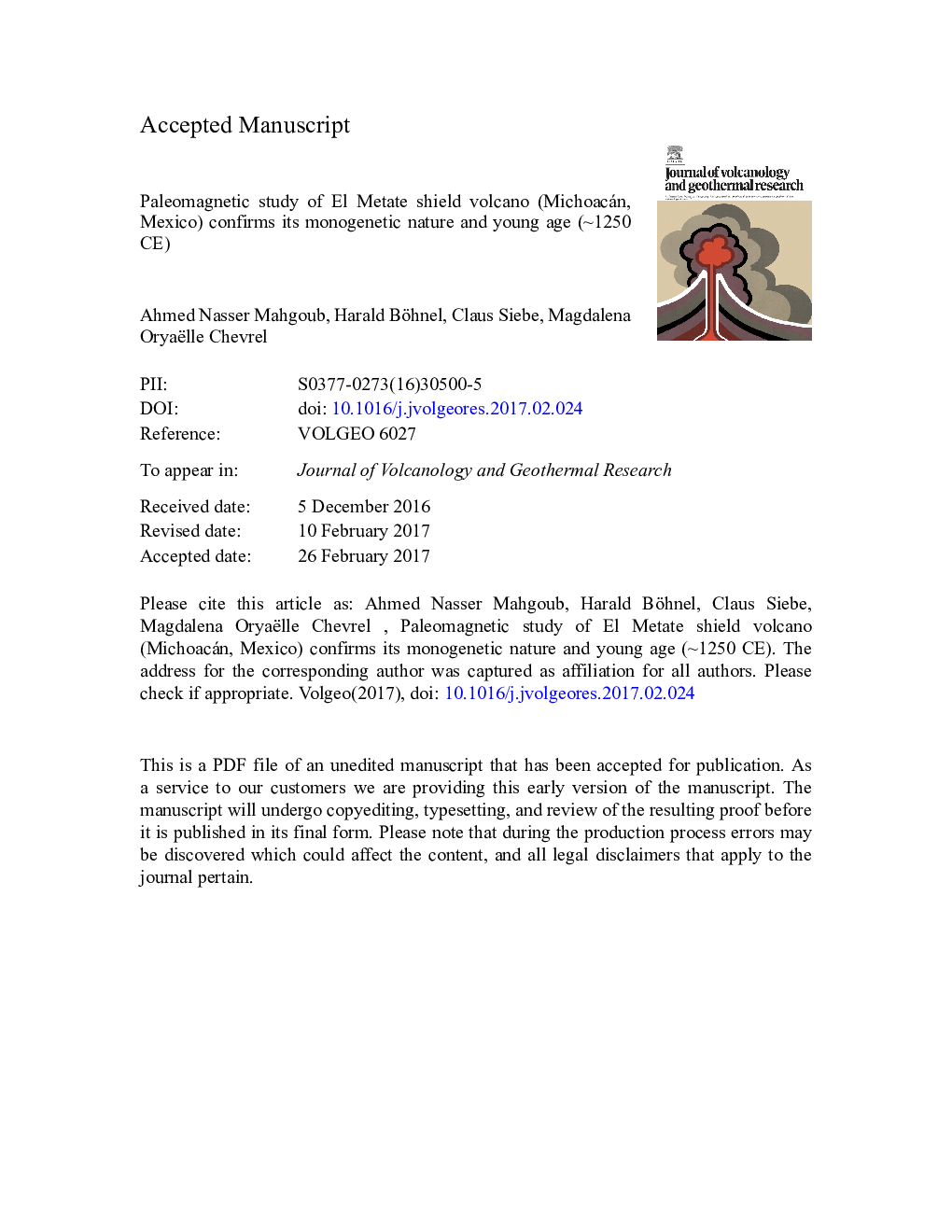| Article ID | Journal | Published Year | Pages | File Type |
|---|---|---|---|---|
| 5783867 | Journal of Volcanology and Geothermal Research | 2017 | 39 Pages |
Abstract
In a recent study, Chevrel et al. (2016a, b) radiocarbon-dated the oldest lava flow of the voluminous (~Â 9.2Â km3) El Metate shield volcano (Michoacán, Mexico) at cal 1250-1260 CE and proposed that its eruption was monogenetic in origin, with twelve younger lava flows emplaced during a short period of only ~Â 35Â years, but certainly <Â 275Â years. In order to test this hypothesis, we undertook a detailed paleomagnetic study of five lava flows from El Metate to check the consistency of their paleomagnetic directions. Additionally, a group of representative specimens was treated with the double-heating Thellier experiment using the IZZI protocol for paleointensity determination. Flow mean paleomagnetic directions obtained for four of the flows are indistinguishable, and discordant directions were obtained from the site of the 5th flow measured, probably due to the tilting of the sampled block after remanence acquisition. Mean paleodirections and intensities were used for paleomagnetic dating applying the global paleosecular variation model SHA.DIF.14k. The resulting age range for the eruption is 1150-1290 CE, which overlaps with the range previously determined by the 14C method by Chevrel et al. (2016a). Accepting the 14C age of the oldest flow as the maximum age, the age range would be reduced to 1250-1290 CE, which strongly supports the hypothesis of a monogenetic nature of the El Metate eruption.
Related Topics
Physical Sciences and Engineering
Earth and Planetary Sciences
Geochemistry and Petrology
Authors
Ahmed Nasser Mahgoub, Harald Böhnel, Claus Siebe, Magdalena Oryaëlle Chevrel,
